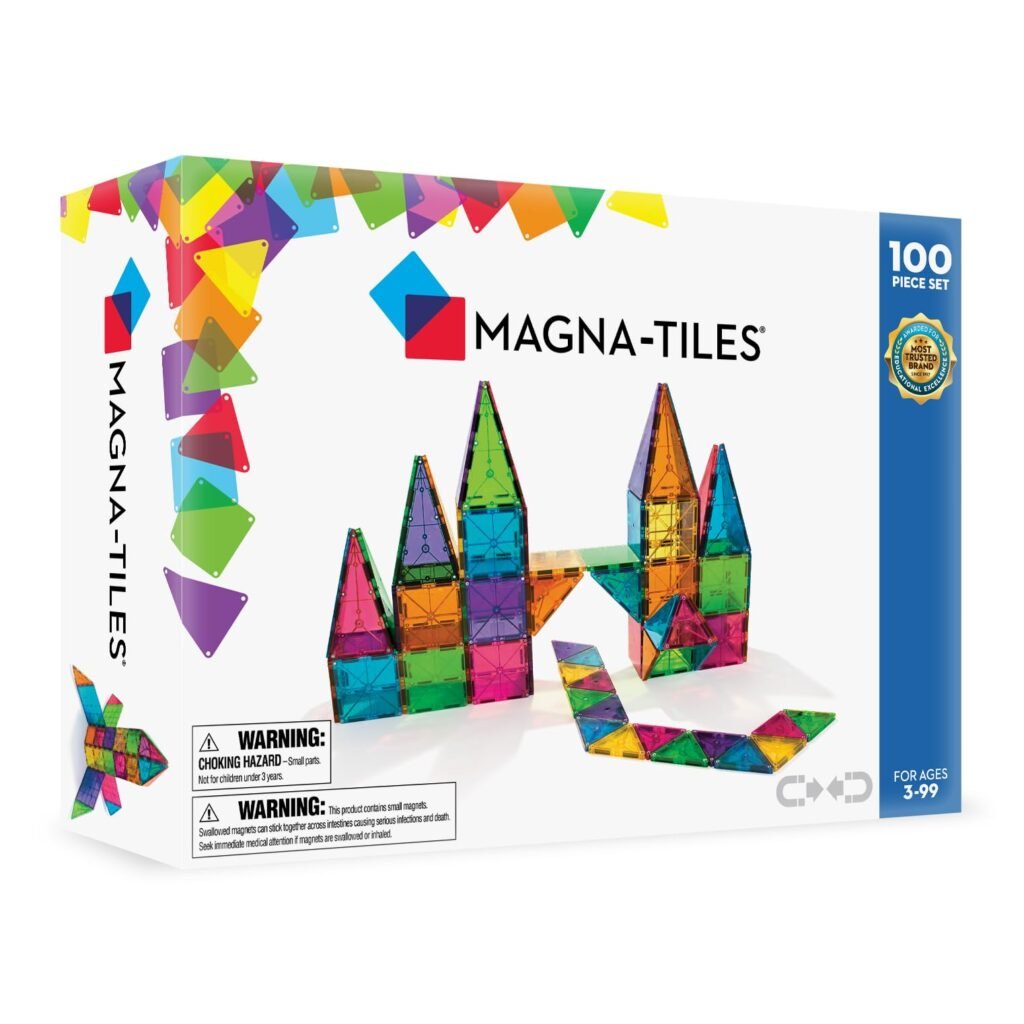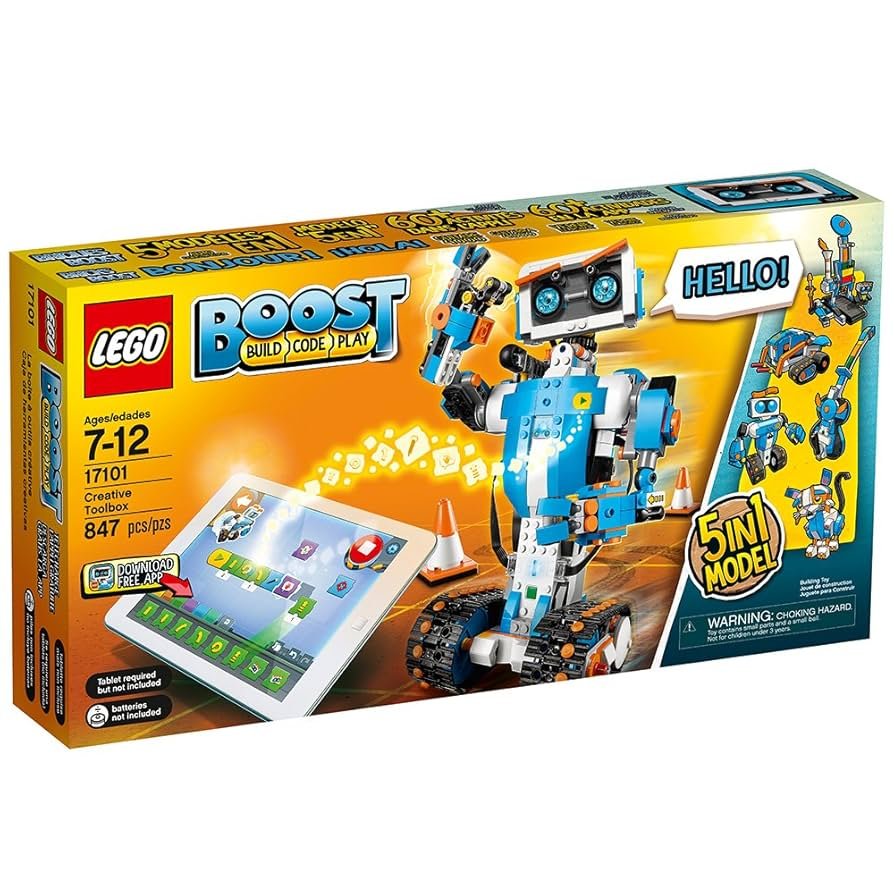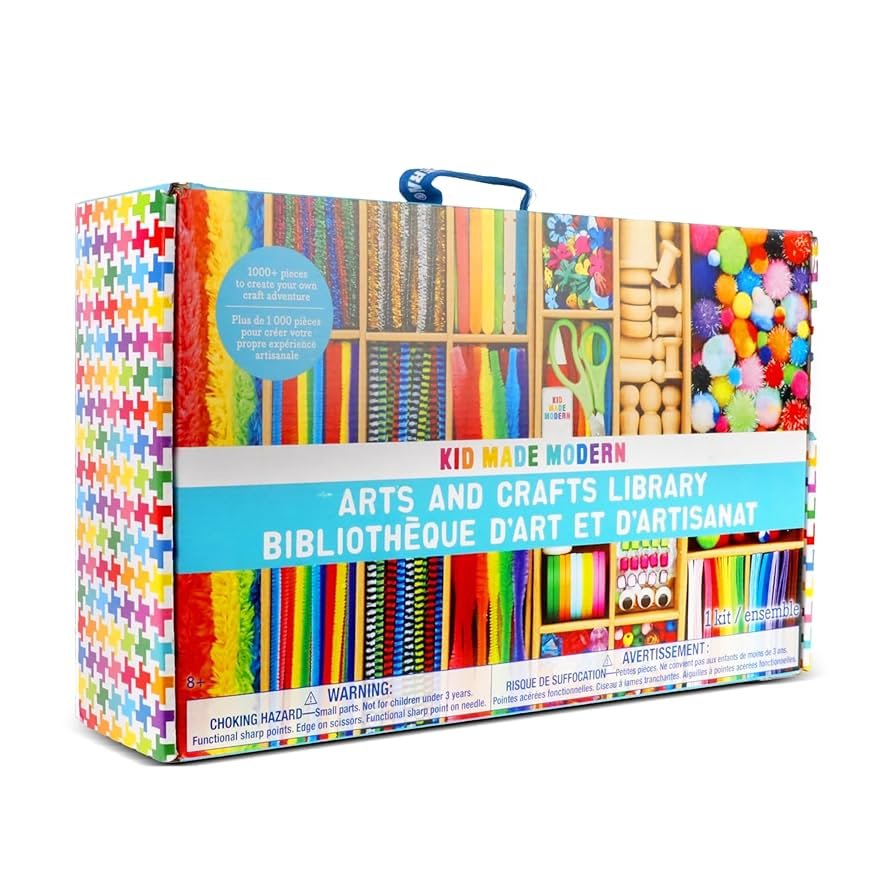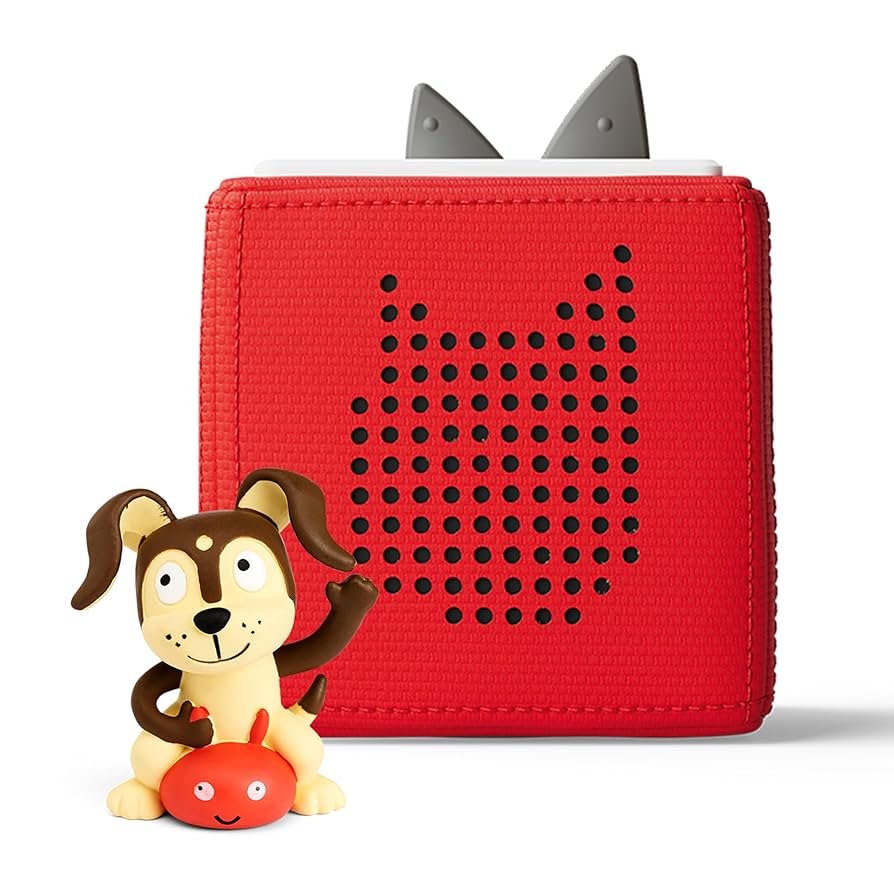You know the look. That vacant, glazed-over stare of a child deep in the hypnotic glow of a screen. You know the struggle that comes with asking them to turn it off—the negotiations, the meltdowns, the sheer digital gravity that seems to hold them captive. As a parent, you grapple with the guilt, wondering if you’re robbing them of some essential digital fluency or, worse, letting their precious childhood curiosity be replaced by passive consumption.
Take a deep breath. You are not alone, and there is a powerful, joyful alternative. The solution isn’t to fight a war against technology, but to offer a more compelling invitation into the world of hands-on, imaginative play. At MindGearMen, we believe in the profound developmental power of tangible creation. We’ve moved beyond simple lists to create the definitive guide to four specific, industry-leading screen-free gadgets that keep kids busy not just for minutes, but for hours, months, and even years. This is your roadmap to reclaiming playtime and nurturing a truly brilliant mind.
The Deeper “Why” Behind Unplugging: Nurturing a Thriving Mind
Before we introduce the gadgets themselves, it’s crucial to understand the profound benefits you’re giving your child by carving out screen-free time. This isn’t just about avoiding harm; it’s about actively fostering growth.
- From Passive Viewer to Active Creator: Screens deliver a finished product. The story, characters, and world are all pre-made. This fosters convergent thinking—finding a single correct answer. Screen-free toys demand divergent thinking—the ability to generate endless new ideas from a single starting point. A pile of blocks isn’t just a pile of blocks; it’s a hundred different possibilities. This is the very foundation of creativity and innovation.
- Learning to Read the Real World: So much of human communication is non-verbal—reading body language, understanding tone, making eye contact. Screen-based interactions flatten this rich social tapestry. When children play together with physical toys, they must negotiate, share, read each other’s expressions, and resolve real-time conflicts. These are irreplaceable social skills that build emotional intelligence.
- Developing the “Grit” to Succeed: The real world has friction. Things don’t always work on the first try. A tower falls, a coded robot turns the wrong way, a craft project gets messy. These moments are invaluable. They teach a child to problem-solve, to persevere through frustration, and to experience the immense satisfaction of finally getting it right. This builds resilience, or “grit,” a key predictor of future success.
Our Top 4 Parent-Tested, Kid-Approved Screen-Free Gadgets: A Deep Dive
1. The Builder’s Dream: Magna-Tiles® Classic 100-Piece Set

This is the titan of open-ended building toys. As the original magnetic tile, Magna-Tiles® has perfected the formula of quality, safety, and limitless creative potential.
- What’s in the Box: The Classic 100-Piece Set is the ideal starting point. It contains 50 Small Squares, 4 Large Squares, 20 Equilateral Triangles, 11 Right Triangles, and 15 Isosceles Triangles. This specific mix is engineered for maximum building versatility.
- The Play Experience: It begins with a satisfying click. The magnets always attract, eliminating the frustration younger kids face with traditional blocks. They’ll start by creating flat, 2D mosaics, but the true magic happens when they discover how to pull a flat “net” of shapes up into a 3D structure. The feeling is one of pure discovery and power. The translucent, jewel-toned plastic makes every creation—from towering castles to futuristic vehicles—a stunning piece of art, especially in sunlight.
- The Hidden Learning: While they play, they’re absorbing complex STEM concepts. They’re not just learning shapes; they’re learning how those shapes combine to create stable structures (geometry and engineering). They’re experimenting with magnetism, balance, and symmetry (physics). They’re engaging in patterning and counting (mathematics).
- Long-Term Play Value: This toy grows with your child. A 3-year-old will enjoy simple stacking and color sorting. A 5-year-old will build elaborate houses for their figurines. An 8-year-old will attempt complex architectural feats and intricate marble runs. It’s a toy that will remain in the play rotation for nearly a decade.
- Parental Involvement: Low. This is a prime independent play toy. Once they understand the concept, kids can and will spend long stretches creating on their own.
2. The Young Engineer’s First Robot: LEGO® Boost Creative Toolbox (17101)

LEGO® Boost masterfully bridges the gap between the physical building world of LEGO and the digital logic of coding. It’s the perfect first step into robotics.
- What’s in the Box: You get 847 LEGO elements, a LEGO Move Hub (the brain), an Interactive Motor, and a Color & Distance Sensor. These components are the building blocks for five distinct models.
- The Play Experience: The journey starts with the familiar joy of building with LEGO bricks. Using the tablet-based app for 3D instructions, your child assembles a model like Vernie the Robot. The real “a-ha!” moment comes when they open the coding interface. Using simple, drag-and-drop code blocks, they command their physical creation to move, talk, and react to its surroundings. This is active and purposeful screen time—the screen is a controller for the real world, not a destination in itself.
- The Hidden Learning: This kit is a fun-filled bootcamp for 21st-century skills. It teaches the core logic of programming (sequences, loops, conditional statements) in a way that feels like a game. The building process itself teaches engineering principles about gears, levers, and stability. Crucially, it teaches debugging—the systematic process of figuring out why something isn’t working and fixing it.
- Long-Term Play Value: After mastering the five included models, the real fun begins. The Boost components can be integrated with other LEGO bricks, allowing a child to design and motorize their own unique creations. The only limit is their imagination.
- Parental Involvement: High (at first), then Low. You will likely need to help your child with the initial build and navigating the app for the first time. But once they grasp the coding interface, they can work independently on programming new actions and challenges.
3. The Artist’s Ultimate Toolkit: Kid Made Modern Arts & Crafts Library

This isn’t a craft kit; it’s a creative universe in a box. It’s designed specifically to combat the “blank page” fear by providing an overwhelming abundance of inspiring materials.
- What’s in the Box: A treasure trove of over 1,000 pieces, including fuzzy sticks, pom-poms, various beads, sequins, googly eyes, felt sheets, foam stickers, wooden dowels, craft sticks, and much more, all organized in a sturdy carrying case.
- The Play Experience: Opening this case is an invitation to invent. With no instructions or pre-determined outcome, a child is completely free. They are not just a crafter; they are a designer, a sculptor, a jeweler, an inventor. They might create a fuzzy monster puppet, a beaded necklace, or a complex diorama. The process is one of pure exploration and self-expression.
- The Hidden Learning: This library is a powerhouse for developing “soft skills.” It builds creative confidence by showing kids there’s no “wrong” way to make art. The sheer variety of materials provides a rich sensory diet. The acts of threading, cutting, and gluing offer a fantastic fine-motor workout. Most importantly, it teaches planning and resourcefulness as they bring an idea from their mind into physical form.
- Long-Term Play Value: This kit is pure creative fuel. It can be used for hundreds of unique projects over several years. It’s the perfect companion for school projects, homemade cards, and rainy-day inventing sessions.
- Parental Involvement: Medium. While kids can create independently, some projects may require adult help with scissors or glue. It’s also a fantastic tool for collaborative family art projects.
4. The Magical Storyteller: The Toniebox

The Toniebox is a triumph of child-centric design. It’s a soft, durable, screen-free audio player that gives children complete, independent control over their listening world.
- What’s in the Box: The starter set typically includes the Toniebox speaker cube in the color of your choice and a “Creative-Tonie”—a blank figurine that you can load with your own audio files.
- The Play Experience: The interface is pure tactile magic. To play a story, a child simply places the corresponding “Tonie” figurine on top of the box. To change the volume, they squeeze the box’s ears. To skip a track, they tap its side. It’s so intuitive that even the youngest toddlers can become masters of their own story time. This fosters a profound sense of independence and ownership over their media consumption.
- The Hidden Learning: The Toniebox is a powerful literacy tool. It develops active listening skills, builds vocabulary, and improves auditory comprehension. By removing the visual component, it forces the brain to do the wonderful work of imagining the characters and settings, strengthening the “theater of the mind.” For pre-readers, it builds a love of narrative that is a key precursor to a lifelong love of reading.
- Long-Term Play Value: The ecosystem is vast and ever-growing. As your child gets older, you can introduce Tonies with more complex chapter books, educational content from National Geographic, or even language-learning lessons. The Creative-Tonie can be re-recorded with new content endlessly.
- Parental Involvement: Medium (at first), then very Low. The initial Wi-Fi setup and downloading of a new Tonie’s content requires a parent’s help via a smartphone app. But once a Tonie is set up, its content is stored on the box, and it can be played anywhere, offline, with zero parental assistance required.
Creating a Home That Invites Play
These gadgets are incredible, but they work best in an environment that encourages unplugged fun.
- Practice “Strewing”: Don’t just leave the toys in a bin. Set them up in an inviting way. Build a small, intriguing Magna-Tiles® structure on the floor before your child wakes up. Leave the Arts & Crafts Library open on the table with some paper. This “invitation to play” is often all it takes to spark their interest.
- Embrace Toy Rotation: Keep a portion of your toys in storage and rotate them every few weeks. When a toy reappears after a month-long absence, it feels brand new again, dramatically increasing its engagement factor.
- Reframe Boredom: The next time your child says “I’m bored,” try responding with an encouraging, “That’s wonderful! Boredom is where the best ideas come from. I can’t wait to see what you create.” This reframes boredom not as a problem to be solved with a screen, but as the launching pad for imagination.
Your Questions Answered: A Parent’s FAQ
We know that investing in new toys and shifting your family’s play habits can bring up a few questions. Here are our answers to some of the most common ones we hear from parents.
Q1: These gadgets are a bit of an investment. Are they really worth the price tag?
That’s a fair and important question. While the initial cost of these gadgets is higher than many mass-market plastic toys, we encourage you to think of it as an investment in “play value.” A cheap toy that is exciting for a day and then forgotten is ultimately more expensive than a high-quality item that engages your child for years.
Each of the products we’ve featured is built to last, often becoming a hand-me-down to younger siblings. Their open-ended nature means they don’t get “beaten” or completed; they grow with your child’s imagination and abilities. When you consider the hundreds of hours of creative, developmental play they provide, the cost-per-hour is incredibly low—far lower than the cumulative cost of movie tickets, digital game purchases, or a drawer full of disposable trinkets.
Q2: The LEGO® Boost set uses a tablet app. How does that fit the “screen-free” philosophy?
This is a crucial distinction we’re glad you asked about. Our philosophy is not anti-screen, but anti-passive screen time. The key difference is between consuming and creating.
When a child is passively watching videos, the screen is the destination. With LEGO® Boost, the screen is a tool. It’s used actively, like a remote control or a musical instrument, to command and program a physical, real-world object. The child’s focus isn’t on the tablet; it’s on the robot they built with their own hands. They are learning the logic of coding and seeing immediate, tangible results. It’s an active, creative, and empowering use of technology that teaches vital STEM skills.
Q3: My child is [X age]. How do I choose the best one to start with?
While every child is different, here’s a general guide to the “sweet spot” for each gadget:
- For Preschoolers (Ages 3-5): The Toniebox and Magna-Tiles® are the undisputed champions. They are incredibly intuitive, durable, and perfectly suited for the developmental stage of younger children, encouraging independence and foundational creative skills.
- For Early Elementary (Ages 6-8): This is the golden age where all four gadgets shine. If your child is a builder who loves tech, LEGO® Boost is a perfect fit. If they are a budding artist, the Kid Made Modern Arts & Crafts Library will provide endless inspiration. The Toniebox and Magna-Tiles continue to be heavily used at this age for more complex stories and builds.
- For Older Elementary (Ages 9+): LEGO® Boost continues to be a favorite, as kids can now integrate it with their other LEGO collections for truly custom creations. Magna-Tiles® also have surprising longevity, as older kids use them to build much more complex architectural structures and even for school projects on geometry.
Q4: What’s the best way to handle storage and cleanup for all these pieces?
An organized space is an inviting space! Here are our top tips:
- Magna-Tiles®: Their best feature is that they stick together! A simple, low-sided bin or even a metal baking sheet works perfectly. Kids can enjoy stacking them into neat piles as part of the cleanup process.
- LEGO® Boost: A dedicated container is non-negotiable to protect the valuable electronic parts. We recommend a clear plastic bin with dividers to sort the smaller pieces, which makes finding the right brick for the next build much easier.
- Arts & Crafts Library: The included carrying case is your best friend. Its built-in compartments are designed for this very purpose. Encourage your child to see organizing their materials as part of being a “real artist.”
- Toniebox: A simple floating shelf, a small basket, or a dedicated section on a bookshelf is perfect for keeping the Tonie figurines visible and accessible.
Q5: What if I buy one and my child doesn’t seem interested right away?
Don’t panic! This is completely normal. Kids are often conditioned to the instant gratification of screens, and it can take a moment for them to decompress and engage with a more open-ended toy. Here’s what to do:
- Model the fun: Don’t just present the toy; engage with it yourself. Sit on the floor and start building a Magna-Tiles® tower or programming the LEGO robot. Don’t pressure them to join; just have fun yourself. Your genuine interest is the most powerful invitation.
- Use a “play prompt”: Instead of saying “go play,” try a specific, low-pressure invitation like, “I wonder if we could build a garage for your toy car?” or “Could you use the craft kit to make a birthday card for Grandma?”
- Be patient: Sometimes, the best thing you can do is leave the toy in an accessible, inviting spot and let your child discover it on their own time. The goal is to foster intrinsic motivation, not to force it.
More Than Just Toys, It’s a Mindset
Choosing to invest in high-quality screen-free gadgets that keep kids busy is about more than just filling time. It’s a conscious decision to invest in your child’s cognitive growth, emotional intelligence, and creative spirit. Gadgets like Magna-Tiles®, LEGO® Boost, the Kid Made Modern Library, and the Toniebox are tools that empower your child to be an architect, an engineer, an artist, and a storyteller. They are invitations to a richer, more tangible world of play.
Which of these gadgets sparks the most excitement for your family? Do you have another screen-free champion in your home? Share your experiences and questions in the comments below—let’s build a community of parents committed to the power of play!



I love your blog.. very nice colors & theme. Did you create this website yourself? Plz reply back as I’m looking to create my own blog and would like to know wheere u got this from. thanks
I am glad to be a visitant of this consummate weblog! , thanks for this rare info ! .